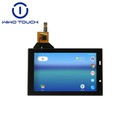Coding and marking devices, including inkjet encoders, printer thermal transfers, and laser encoders, have a wide range of application prospects in several fields. With the global advancement of industrial automation and the development of smart manufacturing, the application of these devices in the following fields will continue to grow:
1. Pharmaceutical and healthcare: In pharmaceutical packaging and medical devices, coding and labelling equipment is used to provide the necessary traceability information to ensure product safety and compliance.
2. Construction & Chemical: In the production, packaging and distribution of construction materials and chemical products, coding and labelling equipment is used to identify product information and batch numbers.
3. Electronics: Coding and marking equipment is used in the production of electronic components and devices to print and mark information such as serial numbers, batch numbers and 2D codes for product traceability and anti-counterfeiting.
4. Food and Beverage: Printing information such as production date, shelf life and nutritional content on food packaging helps with food safety traceability and consumer protection.
In addition, with the development of Internet of Things (IoT) technology, coding and labelling devices will also be combined with intelligent systems for more efficient product management and supply chain optimisation. The global coding and marking equipment market is expected to reach $328,841 million by 2029, growing at a CAGR of 7.4%, demonstrating strong growth potential.
There are several main reasons why coding and marking equipment needs touch screens:
1. Improve the ease of operation: touch screen technology allows users to operate directly on the device, without the need for an external keyboard or mouse, simplifying the operation process and improving work efficiency.
2. Realise human-computer interaction: touch screen can intuitively display the status of the equipment, parameter settings and error messages, which facilitates the user to understand the situation of the equipment in real time and make adjustments.
3. Saving space: touch screen technology reduces the physical space required by traditional control panels, making the code marking equipment more compact and easy to install and use on production lines or workstations.
4. Enhance the user experience: touch screen interface is friendly, intuitive and easy to understand, can reduce the difficulty of operation and enhance the user experience.

Advantages of touch screen in coding and marking equipment:
1. Intuitive and easy to operate: touch screen interface is clear, intuitive icons, users can quickly get started without professional training.
2. real-time feedback: the display can show the real-time status of the equipment and the results of the operation, so that users can use the touch screen to adjust and optimise the production process.
3. Efficient and convenient: touch screen technology simplifies the operation process, reduces the operation steps and time, improves work efficiency.
4. cost savings: touch screen reduces the need for external equipment, reducing equipment costs and maintenance costs.
5. Flexible customisation: the touch screen interface can be customised according to user requirements to meet the operational needs of different scenarios.
Touch screen in the code marking equipment and other applications, need to have the following application advantages:
1. high sensitivity: the touch screen needs to be able to quickly and accurately respond to the user's touch operation, to ensure smooth and unhindered operation.
2. high resolution: the touch screen needs to have a high transmittance rate, the display should be clear and delicate, so that the user can clearly see the status of the device and the operating interface.
3. durability: the touch screen needs to have a certain degree of wear-resistant, scratch-resistant and chemical corrosion-resistant properties to adapt to a variety of harsh working environments.
4. Stability: touch screen needs to maintain stable performance in the process of long-term use, reduce the failure rate and maintenance costs.
5. easy maintenance: the design of the touch screen should be easy to clean and maintain, in order to reduce the difficulty and cost of maintenance.
6. compatibility: the touch screen needs to be able to be compatible with different brands and models of code marking equipment to meet the needs of diverse applications.





